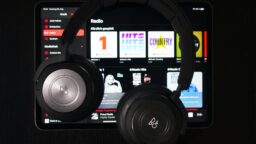
The recent excerpts published on MBW from a report by SNEP – France’s equivalent of the BPI, which represents the ‘Major’ labels – in conjunction with accountants Ernst & Young is received in large part with positivity by the artist community.
It is encouraging to see consensus forming between both the label and performer communities as the extracts seen show consistency with some of the figures published by the French performer organisation ADAMI recently.
In fact the SNEP/E&Y report presents infographics using the same iconic image of a retro volume dial chosen by ADAMI when they presented their numbers.
It seems we are at the point where it is universally accepted that the major labels take the major slice of revenue from streaming.
The gross figures presented in both reports show the split between the various industry parts from a EUR9.99 streaming subscription. 20% VAT to the government and the 30% margin taken by the streaming platforms can be clearly seen as can the roughly 10% that goes to the songwriters and their publishers.
Around EUR 4.50 goes to the labels, which represents about 73% of the gross after VAT.
“Artists are in fact entrepreneurs and each on runs an independent business with all of the normal associated costs”
It is worth noting that this is the split only from the monthly subscriptions and does not take into account any fees, advances or equity stakes taken by the Majors, which is where some would argue that the real money lies.
The slice that is shared between the performers (artists, bands and session musicians) is around 5.5% with ADAMI putting the figure at 46 cents and SNEP/E&Y at 68 cents – either way this is a very small slice of the EUR9.99.
The grit in this particular oyster however is in the conclusion the SNEP report tries to extrapolate from its figures.
They accept the fact that the Majors take 73% of gross revenue, but they present the argument that it is justified by the high cost base maintained by these businesses. The Major labels, much like every business, have to pay salaries, office rents, rates etc in addition to funding new artist projects, which can often be high-risk.
This line of argument concludes in a final infographic comparing the net profit of labels (sitting at around 5% of their gross) set against the gross income received by artists. The result is a clear message that it is in fact the artists who get more of the gross receipts if label costs are deducted.
But this is to assume that artists exist in some kind of creative vacuum. Artists are in fact entrepreneurs in the music industry and each one runs an independent business with all of the normal associated costs.
Managers for example are like the CEO’s of the artist business and they generally take 20% of revenue (leaving 44 cents). Artists also purchase equipment, pay administrative staff, need lawyers and accountants, pay rent, rates – all the normal costs of running any business and they are more and more expected to invest and share the risk on projects thus reducing the ‘capital at risk’ argument so often used by the Majors.
Artists welcome valid analysis of the state of our industry that will help inform the debate on how to shape a sustainable future. But let’s compare like with like, gross vs gross and net vs net. As my maths teacher told me many times in the lead up to my GCSE’s – we must be very careful not to compare apples with pears.
To do so in this case undermines what otherwise could be a very helpful piece of work.
[Pictured: Mark Ronson, whose Uptown Funk! is currently the most-streamed track worldwide on Spotify]Music Business Worldwide




